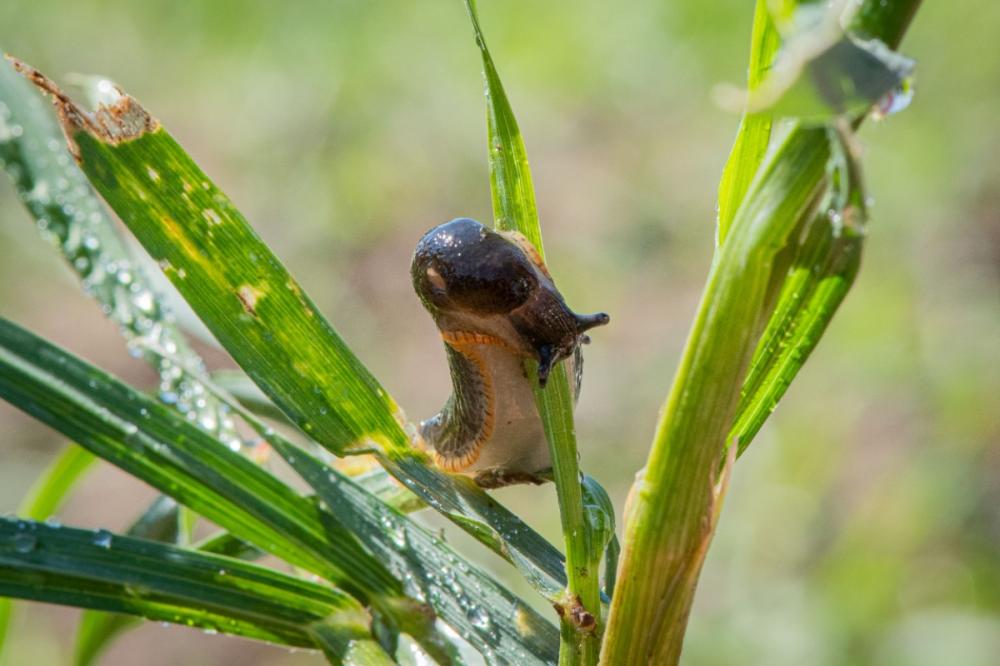search
date/time
 | Yorkshire Times Weekend Edition |
12:00 AM 12th July 2025
nature
Acting On The 2025 Forecast Slug Pressures
Lisa Harlow, product manager at Pelsis Doff

Image: Pelsis Group
However, as we reach the halfway point of 2025, there are signs that it will be another year of high slug pressures.
This is in contrast to a prediction by the Royal Horticultural Society at the start of the spring that said we might see fewer slugs in 2025 due to factors such as natural predation.
However, the rising temperatures and showery conditions as the summer has started means farmers have to ensure they are prepared and react accordingly to stay on top of slugs.
This applies year-round for vulnerable crops, from spring crops to protecting potato tubers from summer slug damage and then autumn drillings of oilseed rape and winter wheat between August and November.
Understanding increased slug pressures
As manufacturers of slug pellets, we at Pelsis Group regularly speak to farmers and agronomists to discuss how slugs are impacting their work.
Earlier in 2025, when we were setting up our spring trials, farmers were reporting back to us that they estimate slug numbers to be up anywhere between 20-25 per cent compared to a normal year.
Like many issues impacting farmers, weather is a critical factor. The very high slug pressure that we’ve seen over the last couple of years is due to increasingly wet summers and autumns, which seem to become more unpredictable and intense with climate change.
During drier conditions, such as those seen throughout April, there is a mild impact on populations as the slugs go deeper into the soil profile and don’t reproduce.
However, this year it was not enough to reduce their numbers significantly. This was on top of a winter which didn’t have a sustained frosty period which would have killed off a large number of slugs and eggs.
Prolonged milder summer temperatures above 13 degrees alongside showery conditions create the optimal conditions for slugs. This means an accelerated lifecycle and faster reproduction, with a single slug capable of laying up to 500 eggs in a season.
For the current crop season, the only weather conditions which would have a significant impact on slug numbers is a prolonged, dry spell alongside sustained periods of intense heat. However, this cannot be guaranteed and weather is very unpredictable.
Beyond the weather, another factor which contributes to higher slug numbers faced by arable farmers is the widespread practice of cover crops. These provide an ideal environment for slugs as they favour the dark and damp conditions that they offer.
Field history and soil type/condition are other contributing factors.
Optimising slug control
Top of a farmer’s toolkit when managing slug pressures are ferric phosphate pellets. To maximise their efficacy and limit damage to crops, farmers need to use them tactically, considering not only factors behind high slug numbers, but also application timings and which pellet to choose.
Slug trapping is an important step at the pre-drilling crop stage to understand pressures and whether pellet applications are actually needed.
The suggested threshold for treatment is if four slugs are found in traps in cereal crops, or just one slug for oilseed rape. Farmers should apply a suitable slug pellet immediately post-drilling as often, the damage is done as the seed chits and before it emerges.
Firescale is a unique and recommended slug pellet due to its resin-based, rainproof formulation - a statement approved by Health and Safety Executives. It can be applied up to four times per season at the label rate of 7kg per hectare.
In very wet conditions, it is recommended crops are reassessed after seven days to see if reapplication is required.
Pellet ballistics and how they spread is also an important factor behind their efficacy. Firescale spreads uniformly up to 12m, aligning with tramlines, providing around 44 pellets/m2, which provides the optimum number of baiting points to ensure the best performance.
For best practice, farmers should ensure that their spreader is calibrated correctly for the pellet which they are using.
Acting on risks
It is increasingly clear that 2025 will present another challenging growing season for farmers when it comes to slug pressures.
This means it is important to draw on lessons from the previous years and act on factors which contribute to high slug numbers and optimising pellet management tactics.